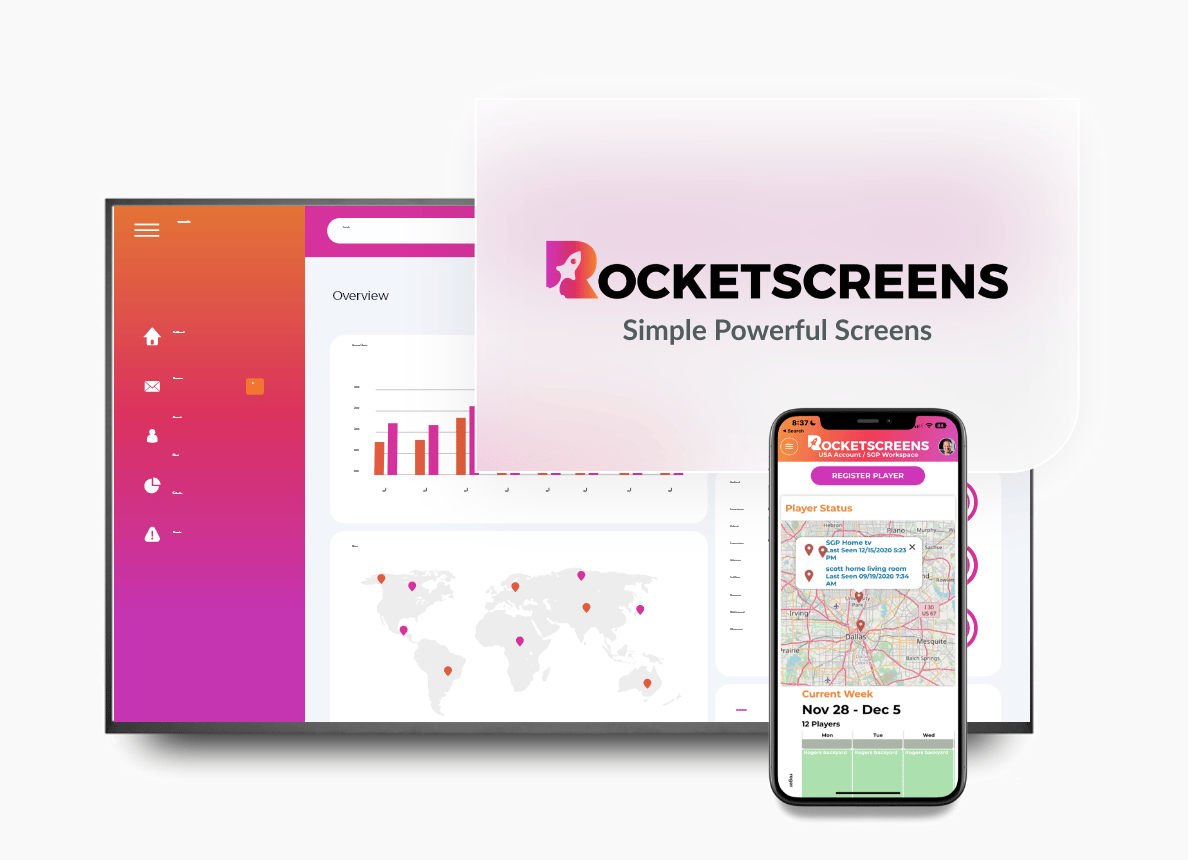
The technology industry moves at a pace that is, frankly, dizzying. New competitors, market shifts, and product updates happen not just quarterly, but weekly. In this high-speed environment, information isn't just power—it's survival. And for a vast majority of tech companies, from SaaS startups in a garage to global enterprise hardware giants, the single source of truth for that information is Salesforce.
Salesforce is the central operating system for many tech businesses. It holds the keys to the kingdom: your customer pipeline, your support queues, your marketing efforts, and your revenue forecasts. Your teams live inside it every day, inputting data, updating records, and managing relationships.
But here’s the problem: for most companies, this mission-critical data stays inside Salesforce. It lives in a dashboard that a manager has to pull up, in a report that gets emailed once a day, or on a laptop screen that only one person can see.
What if that data could be liberated? What if your sales team’s progress, your support team’s victories, and your marketing’s new leads were visible to everyone, all the time, on the screens you already have? This is where you stop just recording data and start using it to build culture, drive motivation, and make smarter decisions, faster.
What is Salesforce and Why is it the Backbone of the Tech Industry?
For those on the outside, Salesforce is often misunderstood as "just a CRM," a digital address book for salespeople. But anyone working in the technology industry knows it's fundamentally more than that. It's an extensible platform, an ecosystem of tools that forms the foundation of a company's entire commercial operation.
Beyond the CRM: The Salesforce Ecosystem
At its core, Salesforce provides a Customer Relationship Management (CRM) solution. It gives a business a shared, 360-degree view of every customer, from the first marketing touchpoint to a sales negotiation, through to onboarding and long-term technical support.
But the real power for the technology industry comes from its specialized "Clouds" and integrations:
- Sales Cloud: This is the command center for B2B tech sales. It manages complex sales cycles, tracks opportunities, handles pricing and quoting (CPQ), and forecasts revenue. For a SaaS company, this is where they track Annual Recurring Revenue (ARR) and pipeline velocity.
- Service Cloud: Tech companies sell complex products that require expert support. Service Cloud manages everything from technical support tickets and case queues to knowledge bases and field service scheduling.
- Marketing Cloud & Pardot: These tools run the marketing automation that feeds the sales engine. They handle lead generation, track campaign performance, and score prospects to identify who is ready to buy.
- Slack: Since its acquisition, Slack has become the "collaboration" layer, integrating chat and workflows directly with Salesforce data, allowing teams to act on information instantly.
For a sector obsessed with metrics, efficiency, and scalable growth, having all this information in one connected system is essential.
Key Use Cases for Tech Companies
Why has Salesforce become so embedded in the tech world? Because it directly addresses its most common challenges:
- Managing Complex B2B Sales: Tech sales aren't simple. They often involve multiple decision-makers, long-term contracts, and complex product configurations. Salesforce is built to manage this B2B complexity.
- Tracking "As-a-Service" Metrics: The technology industry, particularly SaaS, runs on a different set of numbers: Monthly Recurring Revenue (MRR), Customer Acquisition Cost (CAC), Lifetime Value (LTV), and churn rate. Salesforce is the place where all this data is centralized and tracked.
- Aligning Sales and Engineering: In many tech companies, especially in product-led growth (PLG) models, the line between the product and the sales team is blurred. Data from Salesforce needs to flow to product teams (often in tools like Jira) and vice-versa.
- Scaling Customer Support: As a tech company grows, so does its user base. A scalable system for managing support tickets, bug reports, and customer feedback is not optional.
The "Data Silo" Problem: When Good Salesforce Data Stays Hidden
So, your tech company has Salesforce. You're capturing terabytes of valuable data. You have detailed dashboards for every manager. The problem is solved, right?
Not quite. The very-dashboard-centric nature of this data creates a new problem: the data silo.
This isn't a technical silo; the data is all in one system. It's a visibility silo. The information is only available to the person who takes the time to log in, navigate to the right report, and look at it.
Think about your office. Who really needs to see this information?
- Your sales team: They need to know where they stand against their quota, who is on the leaderboard, and when a new lead is assigned.
- Your support team: They need to see the open ticket queue, know the current customer satisfaction (CSAT) score, and see if any high-priority cases are breaching their SLA.
- Your marketing team: They need to see how many new leads came in today, which campaigns are performing, and how their efforts are translating into pipeline.
- Your leadership: They need a high-level view of company health, from total pipeline value to closed-won deals for the quarter.
- Your operations and finance teams: They need to see when deals close to begin invoicing and provisioning.
In most tech companies, getting this data to these people is a manual process. Sales managers refresh leaderboards in their team meetings. Support managers read out ticket counts. Leadership waits for a weekly report.
This "hidden data" problem is more than an inconvenience. It leads to slower decisions, a lack of transparency, and a huge missed opportunity for motivation.
Bringing Salesforce Data to Life: The Power of Digital Signage
This is where the concept of digital signage evolves from simple lobby decor to a powerful business tool. When we talk about digital signage for a business, we're not talking about digital ads. We're talking about dedicated screens in your work areas—in the sales pit, in the engineering bay, in the cafeteria—that display real-time, dynamic information that helps people do their jobs.
And what's the most valuable information you have? For a tech company, it's what's inside Salesforce.
Visualizing Success: Key Salesforce Metrics for Your Office Screens
Imagine walking through your office. Instead of blank walls or static posters, you see screens that tell the story of your business, right now.
- For the Sales Floor:
- Live Leaderboards: Nothing sparks friendly competition like a real-time leaderboard showing who is leading in calls, demos set, or pipeline created.
- "Closed-Won" Alerts: A new deal closes. Instantly, a "gong" alert flashes on the screen with the salesperson's name, the company name, and the deal value. This is instant, public recognition.
- Quarterly Goal Tracking: A progress bar showing the entire team's progress toward its quarterly revenue target.
- New Lead Alerts: "Hot Lead Assigned: Jane Doe - ACME Corp."
- For the Support & Success Teams:
- Live Ticket Queue: A dashboard showing total open tickets, cases by priority (P1, P2, P3), and agent availability.
- CSAT & NPS Scores: Display your Customer Satisfaction or Net Promoter Score as it updates. Keep quality front-and-center.
- Time-to-Resolution: Show the average time it takes to close a ticket, driving the team to maintain efficiency.
- For Marketing & Demand Gen:
- New Leads Generated (Today/Week): A simple counter that shows the impact of marketing efforts in real-time.
- Campaign Performance: A simple chart showing which campaigns are driving the most new MQLs (Marketing Qualified Leads).
- Website Traffic: A feed from Google Analytics showing concurrent visitors.
The Psychological Impact of Visible Data
This isn't just about showing numbers. It's about changing behavior and building culture.
- Motivation: Public recognition is a powerful motivator. A sales leaderboard or a "deal won" alert provides that instantly, reinforcing positive actions.
- Accountability: When key metrics are visible to everyone, it creates a culture of ownership. Teams can see, in real-time, the impact of their work.
- Alignment: When everyone from an intern to the CEO can see the same top-level metrics, it aligns the entire company around common goals. There's one version of the truth.
- Celebration: Visible data gives you a reason to celebrate the small wins, not just the quarterly ones. It builds momentum and makes work more engaging.
The RocketScreens Solution: Connecting Salesforce Securely and Simply
At this point, you might be thinking, "Great. I'll just hook a computer up to a TV and log in to Salesforce."
This is the moment where most companies stop. And it's for good reason. That "simple" solution is a security and logistical nightmare.
Why Your Average Screen-Share Won't Cut It
The "computer-on-a-stick" approach is flawed for several reasons, especially for a security-conscious tech company:
- Massive Security Risk: You are logging into your company's most sensitive system on a public, unattended device. A user's credentials are now cached on that machine. What if someone gains access to it and, by extension, your entire customer database?
- It's Manual and Static: Someone has to physically log in, pull up the right dashboard, and put it in full-screen mode. What happens when the computer needs to restart for updates? What if you want to show a different dashboard? The information is static and requires constant manual intervention.
- IT Overhead: This solution creates a new, unsupported "rogue" device for your IT team to manage. It's not scalable, and it's not secure.
How RocketScreens Makes It Easy and Secure
This is precisely the problem RocketScreens was built to solve. RocketScreens is a simple, secure digital signage platform that connects directly to your data sources.
Our secure integration with Salesforce is a perfect example. Instead of logging in on a TV, RocketScreens uses a secure, authorized API connection (OAuth) to pull only the specific data you tell it to.
Here’s what that means for you:
- No Stored Credentials: Your Salesforce login details are never stored on the physical TV or player. The connection is token-based, meaning it's authenticated securely in the cloud.
- Always-On, Always-Fresh: The data is pulled directly from the source. When a deal closes in Salesforce, it updates on your screen seconds later. No refreshing, no logging in.
- Display What You Want: You don't have to show your entire Salesforce instance. You can choose a specific report, a single dashboard, or even just a few key numbers (KPIs) and display them in a clean, easy-to-read format.
Beyond Salesforce: Creating a Complete Data Story
Your technology company doesn't just run on Salesforce. The real power comes when you can tell a complete story with all your data.
This is the other piece of the puzzle. RocketScreens connects to over 100 applications. Your Salesforce data is important, but it becomes even more meaningful when paired with information from your other systems.
Imagine creating a "channel" for your sales team that automatically rotates through:
- Slide 1: The Salesforce Sales Leaderboard (from Salesforce)
- Slide 2: The Marketing Campaign Dashboard (from Power BI or Looker Studio)
- Slide 3: Key company announcements (from Slack or SharePoint)
- Slide 4: The top 5 open support tickets (from Zendesk or Jira)
- Slide 5: Positive customer quotes (from a Google Sheet)
Now, your sales team doesn't just see their own numbers; they see how marketing is feeding them, what issues support is handling, and the company news they need to know. This is how you break down silos for good.
Real-World Scenarios: How Tech Companies Win
This isn't just theory. This is how high-growth tech companies operate.
- The SaaS Startup: A fast-growing software company uses RocketScreens in its main sales area. A "Closed-Won" alert from Salesforce is piped to a Slack channel, which RocketScreens picks up and displays on a 70-inch screen with a custom "gong" sound. The entire floor erupts in applause. The salesperson gets instant recognition, and the rest of the team is fired up to be the next one on the screen.
- The IT Services Firm: An IT consulting firm displays its Service Cloud dashboard on a screen near the support desk. The team can, at a-glance, see the incoming ticket volume, average resolution time, and any high-priority alerts. It helps them manage their workload and ensures urgent client issues are never missed.
- The Enterprise Hardware Company: In the executive briefing center, screens display high-level Salesforce data: pipeline by region, YTD revenue vs. target, and key strategic accounts. This gives leadership and visitors a real-time snapshot of business health, all pulled securely without needing a single login.
Your Salesforce data is one of your technology company's most valuable assets. It's time to stop treating it like a secret.
Don't let your most important metrics stay hidden in a dashboard. Put them on your walls. Make them visible, make them actionable, and use them to build a more aligned, motivated, and data-driven company.
Ready to see your Salesforce data on any screen? Learn more about RocketScreens and our 100+ secure integrations.





